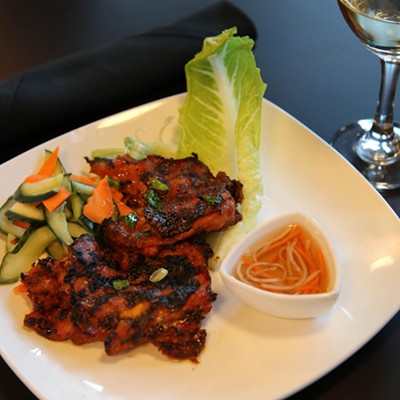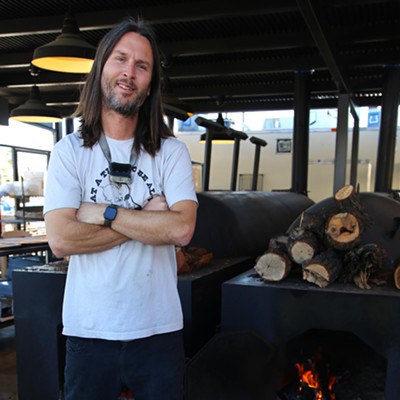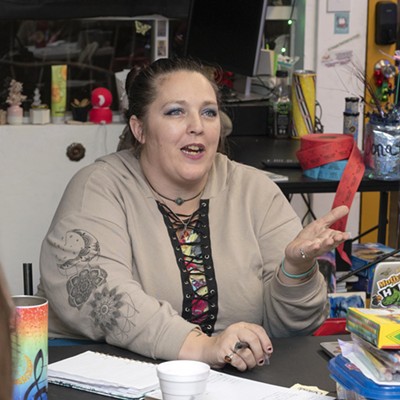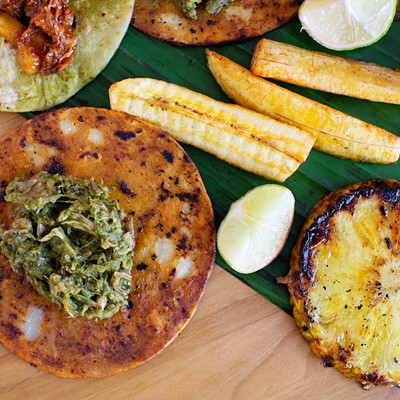The rosy fingers of dawn have just begun to reach over the Santa Catalinas, and Dianne Trinque is already hard at work in her meticulously ordered kitchen.
She hangs utensils on strategically placed hooks. She wipes down the table that sits squarely in the middle of the room. And then she gets down to business.
Trinque is the owner and chocolatier at Sabino Artisan Chocolates in Oro Valley. While she wears many other hats at the small, year-old business, she does have a cadre of helpers. Her husband, Pete, and daughter Michelle, a local pastry chef, assist year-round. And during the winter-visitor season, she has two "working consultants," Albi and Marianne von Dach.
Albi is a retired chocolatier from Switzerland, and he lends a hand and a critical eye. He gave Trinque many of his old molds. Marianne helps with packaging and stocking of the store shelves.
Today, Trinque needs to finish the Passionate Hearts, heart-shaped white-chocolate bonbons with a passion-fruit filling that she made the day before.
Trinque makes and sells bonbons, truffles and fudge. The fudge comes in a dozen flavors; the truffles and flat bonbons are luscious, with lovely names/flavors such as Dark Passion, Lavender, Bailey's Irish Caramel, Cherry Kirsch, Lemon, Earl Grey and Raspberry, with seasonal flavors like Creamsicle and Winter Orange.
They come in different shapes: squares, rectangles, towers, hearts, domes. Some have intricate designs on top that are made of patterned cocoa butter transfer sheets that Trinque cuts in squares and places on the pieces when they are still warm. Others are hand-painted. They're all displayed in a case in the storefront, like an array of sparkling jewels in all sizes, shapes and colors.
Being a chocolatier is Trinque's second career. She was an analytical chemist for most of her working life.
"It's very much like chemistry, very precise; there's a lot of technique. I like the technique," she said about becoming a chocolatier. "I like the aesthetics. This is more fun."
Trinque was inspired to change occupations when she couldn't find in Tucson the kind of chocolate shop she grew up with in Ohio. She learned the basics and beyond at Ecole Chocolat, an online chocolate school, and by attending various classes and food expos.
There are six possible crystal forms that can occur during the chocolate-making process, "But I only want one, the fifth form, the 'V' form. It's where you get the snap, the hardness, where it won't melt in your hand," she said.
This process is called tempering. "Chocolate," she said, "is temperamental." Pun intended.
"I can table the chocolate, or I can seed the chocolate, which is done in the melters," electric devices that resemble a Crock-Pot, but are shallower and without a lid, she said. "I need to do this for all the chocolate."
Tabling means pouring two-thirds of the melted chocolate onto a cool surface—in this case, granite slabs—and working it with a spatula until it cools a bit, and then returning it to the rest of the chocolate. "The two combined should be ideally at the right temperature to start working." Trinque said.
To "seed" means to add more chocolate to the melter as she stirs.
For white chocolate, the working temperature is between 85 and 87 degrees. Milk chocolate works best at 86 to 88 degrees, and dark chocolate—which Trinque said is the easiest to work with—tempers best at 88 to 90 degrees.
She must constantly stir the chocolate, checking the temperature with a laser thermometer. Even with the precision of the laser, she still needs to test the chocolate. This time, the tool is a simple metal spoon that she dips into the chocolate.
She then lets it cool for exactly three minutes. When the chocolate sets, it's ready to go. Trinque has to move fast to prevent the mass from becoming too thick.
Trinque has three tempering machines, one for each type of chocolate. They are always kept at the ideal temperature; a huge blade is attached for stirring the chocolate. As scientific as the process is, two of the machines are heated only by large light bulbs, like a child's Easy-Bake oven.
This morning, there is a mass of white chocolate in a melter. Trinque works the chocolate for about 20 minutes, taking its temperature every few minutes. After several spoon tests, the chocolate is ready.
Trinque pulls out heart-shaped molds that she filled yesterday with a layer of white chocolate, plus the passion-fruit filling, and spreads the perfectly tempered chocolate over the top (which will become the bottom) of the bonbons. It looks easy, but precision is needed. The sweet treats will then set for about 30 minutes before she removes them from the mold.
The bonbons, which are made of a hard ganache, need to be cut into individual pieces. Trinque uses a tool called a guitar for this next step. The guitar works on the same principle as a wire egg-slicer, only it's bigger, square and made of metal.
The chocolate is poured into a frame and placed on the guitar. Then Trinque pulls down the lid. Voilà! Bonbons!
There is one, final step: twice hand-dipping each bonbon in the tempering machine. Called enrobing, it's a true labor of love, and the results are worth it. Trinque hopes to have an enrobing machine soon as part of her arsenal. She called it the "Lucy and Ethel" machine, referring to the iconic chocolate-factory scene from I Love Lucy.
A warren of glossy chocolate bunnies connected by a solidified puddle of chocolate sits on the table. One bunny, carrying a basket, is 2 feet tall. Others, with big eyes, are only a few inches high. Some have floppy ears. One is riding a motorcycle. Most have been painted with tiny details.
These are Easter bunnies, of course, and because chocolate at this stage still has a long shelf life—about six weeks—these guys will still be as delicious as they are pretty come Easter Sunday. Last year, Sabino sold nearly 1,000 of them.
Before she opens the store doors, Trinque will free the bunnies from their chocolate puddle, un-mold the Passionate Hearts (which reveal a bright, colorful swirl that she painted in the mold with colored cocoa butter), put them in the display case and set out blocks of luscious-looking fudge.
Trinque then puts on her retail hat. It's time to open the store.








